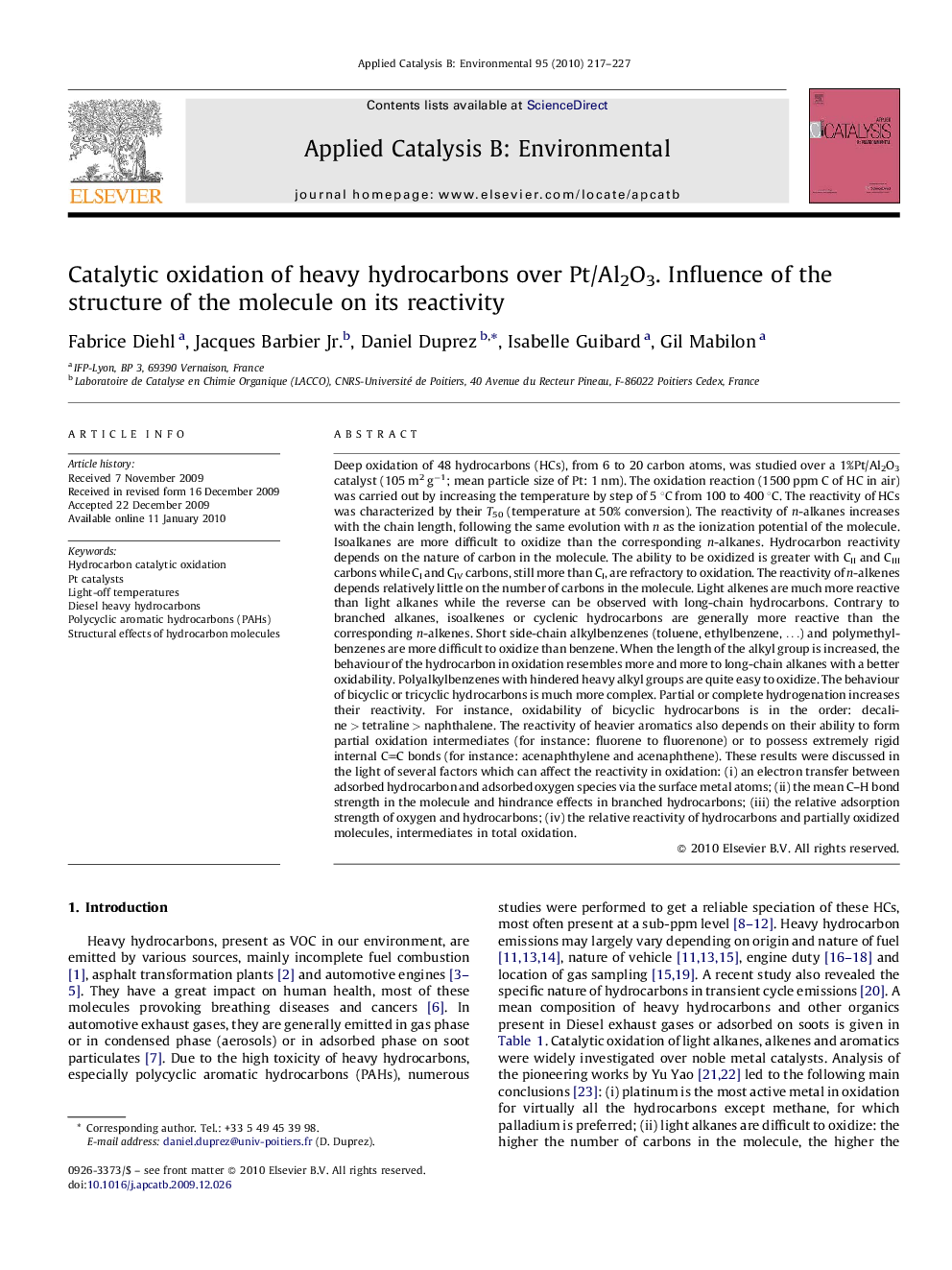| کد مقاله | کد نشریه | سال انتشار | مقاله انگلیسی | نسخه تمام متن |
|---|---|---|---|---|
| 47476 | 46473 | 2010 | 11 صفحه PDF | دانلود رایگان |

Deep oxidation of 48 hydrocarbons (HCs), from 6 to 20 carbon atoms, was studied over a 1%Pt/Al2O3 catalyst (105 m2 g−1; mean particle size of Pt: 1 nm). The oxidation reaction (1500 ppm C of HC in air) was carried out by increasing the temperature by step of 5 °C from 100 to 400 °C. The reactivity of HCs was characterized by their T50 (temperature at 50% conversion). The reactivity of n-alkanes increases with the chain length, following the same evolution with n as the ionization potential of the molecule. Isoalkanes are more difficult to oxidize than the corresponding n-alkanes. Hydrocarbon reactivity depends on the nature of carbon in the molecule. The ability to be oxidized is greater with CII and CIII carbons while CI and CIV carbons, still more than CI, are refractory to oxidation. The reactivity of n-alkenes depends relatively little on the number of carbons in the molecule. Light alkenes are much more reactive than light alkanes while the reverse can be observed with long-chain hydrocarbons. Contrary to branched alkanes, isoalkenes or cyclenic hydrocarbons are generally more reactive than the corresponding n-alkenes. Short side-chain alkylbenzenes (toluene, ethylbenzene, …) and polymethylbenzenes are more difficult to oxidize than benzene. When the length of the alkyl group is increased, the behaviour of the hydrocarbon in oxidation resembles more and more to long-chain alkanes with a better oxidability. Polyalkylbenzenes with hindered heavy alkyl groups are quite easy to oxidize. The behaviour of bicyclic or tricyclic hydrocarbons is much more complex. Partial or complete hydrogenation increases their reactivity. For instance, oxidability of bicyclic hydrocarbons is in the order: decaline > tetraline > naphthalene. The reactivity of heavier aromatics also depends on their ability to form partial oxidation intermediates (for instance: fluorene to fluorenone) or to possess extremely rigid internal CC bonds (for instance: acenaphthylene and acenaphthene). These results were discussed in the light of several factors which can affect the reactivity in oxidation: (i) an electron transfer between adsorbed hydrocarbon and adsorbed oxygen species via the surface metal atoms; (ii) the mean C–H bond strength in the molecule and hindrance effects in branched hydrocarbons; (iii) the relative adsorption strength of oxygen and hydrocarbons; (iv) the relative reactivity of hydrocarbons and partially oxidized molecules, intermediates in total oxidation.
Journal: Applied Catalysis B: Environmental - Volume 95, Issues 3–4, 6 April 2010, Pages 217–227